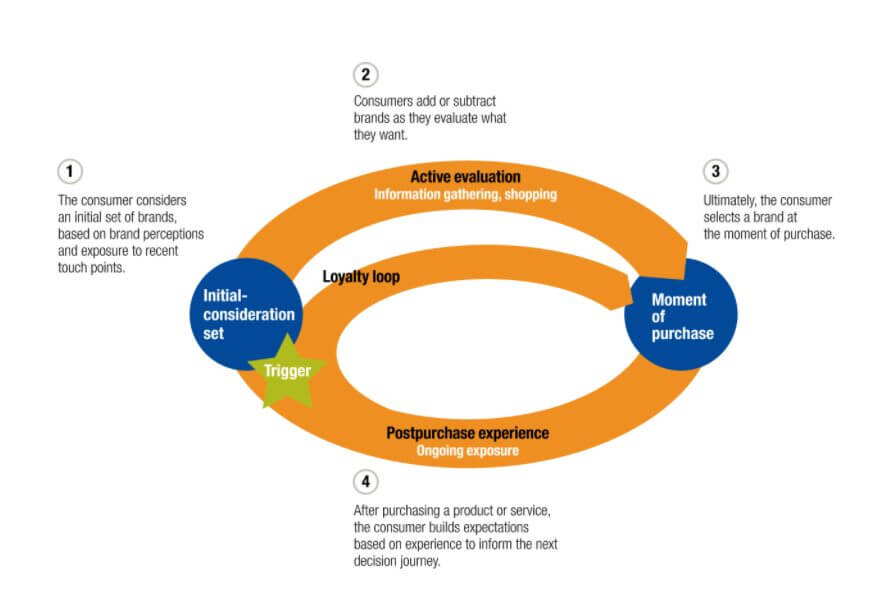In the past few months we have hosted a number of webinars with thought leaders in the industry. One of our favorite ones was a webinar with Tim Hughes titled “Social Selling Skills to Influence Buyers”. In this hour long conversation, our CEO Jon Ferrara and Tim discuss how the digital landscape has changed habits of our potential customers. They talk about the skills and techniques necessary to develop relationships with decision-makers through social media.
Tim Hughes has been a social media power user for over 7 years, having built a following on Twitter of 165,000. He is an internationally renown speaker, blogger and writer. He shared most of his social selling knowledge in his bestselling book “Social Selling: Techniques to Influence Buyers and Changemakers”. Tim is also the co-founder of Digital Leadership Associates, a company designed to help businesses make a transformational move to embrace digital and social.
If you’d like to go ahead and watch the webinar, feel free to hit play now. In case watching is not an option for you at this moment, I hope that you will enjoy the summary below.
Buyers Are Better Informed Than Ever in History
Tim kicks off his presentation with talking about the modern buyers. We now live in a situation where our buyers are better informed than ever in history. Everybody has a mobile phone and therefore an incredible amount of information at their fingertips. Everytime we think about buying something, our journey usually starts online. The amount of information people have before they speak to a salesperson is rising which is why companies need to make sure that their buyers find enough information about the products and services they are selling.
Buyers seek somebody who is giving out the information they are currently in need for and who they can trust. This is when salespeople should come in. They should be out there swimming in the social river engaging with prospective buyers and learning about their needs through conversations. Companies should encourage their salespeople to be creating content that is answering some of the questions buyers are looking for during their decision-making process. Salespeople should be thriving to establish themselves as trusted advisors and experts.
[Tweet “Services is the new #sales. ~ @Jon_Ferrara “]
Companies Need to Learn How To Influence Consumers During Their Research Period
Becoming a trusted expert in the area of the promise of the company’s product or services could have amazing long-term benefits. If customers find somebody who they feel like they can trust with their wants and needs and this person helps them to solve these wants and needs, they will most likely spread the word about their excellent buying experience. This could result in word-of-mouth recommendations to their peers, good feedback on review sites and positive mentions of the particular company on social media.
Salespeople need to get involved earlier in the conversation than in the past and they need to be proactive about it. Tim says that research shows that when people call or reach out to a salesperson, their research is sometimes 80% complete.
Jon Ferrara mentions a great article from McKinzey & Company which covers the customer decision journey and how it has changed in the past years. We learn that the decision-making process is now a circular journey with four phases: initial consideration; active evaluation, or the process of researching potential purchases; closure, when consumers buy brands; and post-purchase, when consumers experience them.
Tim walks us through a specific scenario and the results his company achieved for one of their clients using Social Selling techniques. For this particular client he mentions they have increased their Share of Voice from 39% to 84% and changed the way their company was known for on the internet into what they actually wanted to be known for. This is a great example of how using social media effectively can result in completely transforming the way companies are perceived on the market.
What Social Selling Is Not
After showing real-life examples of what social selling is and what the positive impacts on a brand can be when used right, Tim also gets into what social selling is not. Unfortunately, there’s still many people that confuse social selling with spamming their prospects on social media. Tim talks about a scenario when salespeople sent over a pitch immediately after connecting on LinkedIn.
Social Selling Don’ts: Don’t blast people with your marketing messages. Don’t over promote yourself. Don’t pitch right away. Don’t jump right in without a proper strategy and research.
What Is The Right Approach?
Networking on social is similar to traditional networking. Tim and Jon both agree that creating relationships on social media and engaging in conversations is not dissimilar to the way it has always been done. They both use an example of how we used to walk into each others’ offices and look at the walls to find out what schools the other person went to, what books they read, what gadgets and knick-knacks they collect. Armed with this information, we would start a conversation. These days, we do this by walking in people’s digital footprints. We do this by scrolling through their feeds and reading and watching what they share.
Share Content Relevant To The Promise of Your Product
Jon Ferrara walks us through his Twitter feed on the webinar showing how he shares content to inspire and educate people and encourage them to engage in a conversation with him. He curates content that is relevant to the promise of the product he sells. In his case, it’s Nimble — a Social Sales and Marketing CRM. Therefore anything related to social media, social selling, sales, marketing, technology and startups is in line of the promise of his product. By sharing content that is well-written by some of the best experts in the industry, he helps people to find out how they can be better at social media, sales, marketing, etc. Jon uses a fishing metaphor for this strategy. He believes that if he teaches people how to fish in the social media, sales, and marketing river, they will figure out that he sells fishing poles (software) that can help them manage their sales and marketing.
[Tweet ““If you teach people to fish. They will figure out that you sell fishing poles.” @Jon_Ferrara”]
Respond, Retweet, Like, Share .. Engage!
When you take the time to curate great and relevant content that addresses some of the issues people might be having, it is very possible that people will start interacting with the content. You will soon start seeing retweets, likes, and comments. These signals are great conversation starters and opportunities for engagement. This also creates an opportunity to connect with the authors of the content you share. It’s always a good practice to attribute the content to those who created it. They themselves will get a notification that you shared their work and if they don’t reach out to you themselves, you can go ahead and send them a message explaining what you liked and/or connect with them on LinkedIn.
Build Relationships
Jon goes into explaining the life-cycle of connections. He says that many times the connection starts in one place like Twitter. It later moves into LinkedIn and then, after setting up a meeting, onto his calendar. After that, a series of emails might follow. After a while, some of the connections develop into more intimate relationships and move onto places like Facebook. Jon believes that the most successful way to create an authentic relationships with people is to connect through shared passion, plan, and purpose. During this webinar, he walks us through his Facebook and Instagram feed and demonstrates how he shares his passions with his network and explains what he calls the “5 S’s” of creating real relationships: Family, Friends, Fun, Food, Frolicking.
[Tweet “The biggest problem we have is not following-up with our connections.”]
The Need For a CRM
In order to stay top of mind with your network, especially as it grows, you need a system that will help you. A CRM system will allow you to schedule reminders and keep all the information about a certain person under one contact record. All email communications will be conveniently stored in one place making it easier to see what you have talked about with everyone in your database.
Jon also demonstrates how you can use Nimble’s browser extension to create live profiles on people and companies anywhere you are on the internet by simply hovering over their name. It gives the complete history of email interactions, your calendar interactions, it gives you the opportunity to walk in this person’s Twitter stream, allows you to schedule follow-up tasks that are so important in order to turn the connection into a relationships and ultimately into a measurable business outcome.
[Tweet ““The biggest cause of failure of #CRM systems is the lack of use.”]
The advantage of Nimble that Jon talks about on this webinar is that it saves you a lot of time that you would spend by googling information about people and then logging the information in your CRM. The browser extension does this for you and automatically attaches the information it finds to contact records.
The Importance of Community and Influence
Tim talks about the importance of community from a sales perspective. He tells a real-life example about him and his girlfriend recently moving into a new house in London. They were in need of a gardener a a cleaner and immediately asked their neighbors for recommendations. Tim says that this is exactly what he has been trying to do with his own connections and community. His goal is for his network to recommend him and his company every time somebody in their network asks about who they should talk to about social selling and developing a social selling strategy for their businesses. He believes that by establishing yourself as a trusted thought leader in your area of expertise you are creating demand.
Jon adds that from a business owner’s perspective it is also necessary to create an influencer strategy. If you develop relationships with the key influencers in your industry who are your prospects’ and customers’ influencers and often have networks of thousands or even tens of thousands of people, you can increase your reach exponentially.


